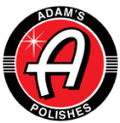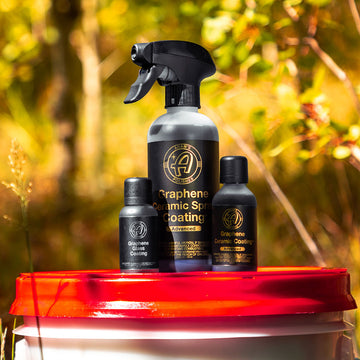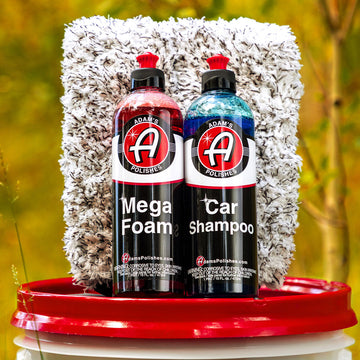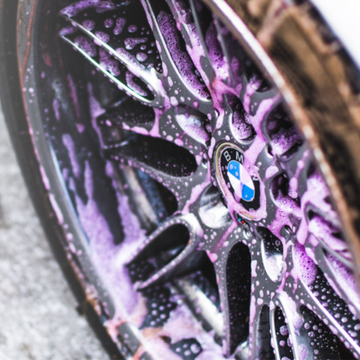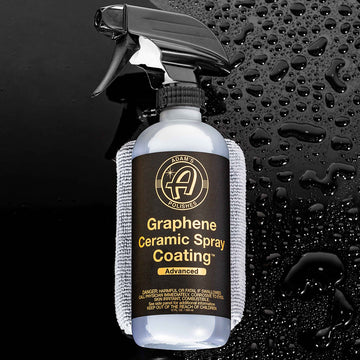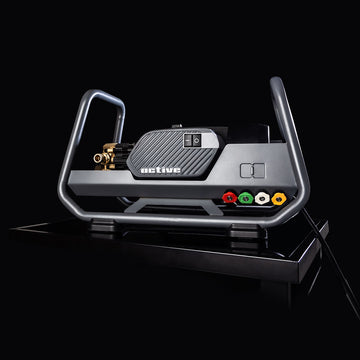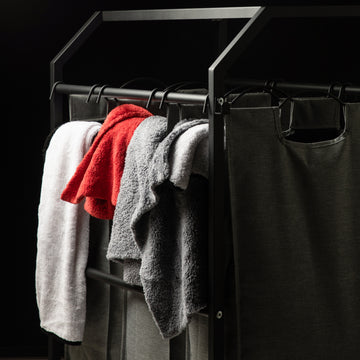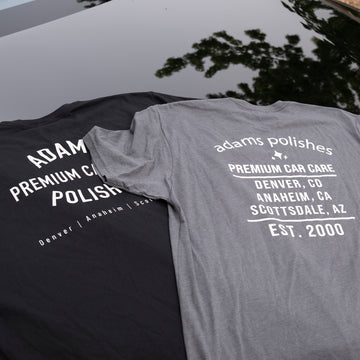This video settles the great debate as to whether you can achieve the same level of results of removing swirl marks and scratches through hand polishing as you would with machine compounding and polishing, whether it simply is not possible, or whether it's somewhere in between with generally a good improvement in swirl mark reduction and increase in gloss, color, and depth. We'll explain everything below, but here's the spoilers up front - the answer is that hand polishing will not give you the same results as machine polishing, but hand polishing can still give acceptable results for many, and a nice overall improvement in the finish quality of the paint. Now let's take a more in-depth look and explanation of both options for improving your vehicle's paint.
Before we jump into the discussion of hand polishing versus machine polishing, first we should explain the difference between polish and wax. As Joe mentions in the video, some are under the impression that wax and polish are synonymous, or equal terms, but this has been a misunderstanding for quite a fair amount of our customers for many years now. Waxes are blends of carnauba, montan, and other natural materials designed to add a temporary or sacrificial layer of protection on top of the clear coat. Waxes typically only last a few weeks to a few months since they are subjective to heat. They increase gloss and depth by trying to fill-in and somewhat hide defects like light scratches and swirl marks or spider webbing in the clear coat. A polish on the other hand, uses micro-abrasives to carefully remove defects like stains, oxidation, and faint swirl marks by rubbing an applicator pad back and forth over the surface to slowly abrade away the imperfections, to bring out even better levels of shine and depth to the finish than a wax alone. In most cases like our white machine Polish, it does not leave any type of protection on the surface, leaving behind a bare, exposed clear coat.
Polish won't always remove every defect easily though, so that is when you will need to take it to the next step with a chemical that has a little more bite. We'll explain both the by-hand option and the machine option next. Compound is the more aggressive machine paint correction step that is used when you have deeper swirl marks and scratches that Polish has difficulty in removing. Compound when combined with a more aggressive cutting pad and a random orbital polisher can make significant damage nearly disappear, but since it is more aggressive, it will usually leave a haze to the finish that then requires you to then step down to Polish and a softer pad to bring back the original color and depth to the finish. There are various levels of how aggressive a compound may correct the finish. Some will remove more clear coat than others, cause high amounts of compound dust into the cracks and body seams on the vehicle, and require a lot of effort to wipe away the residue. We want things to be as easy as possible though, so you will find that our blue Compound is very low dust, very easy to wipe off, and not super aggressive.
Just as you use Compound with a machine polisher for deeper defects, our Scratch & Swirl Remover is a stronger hand polish for reducing or removing more significant damage without the use of a machine. It pairs with our Orange Hex Grip Applicator, which has a more firm, dense foam that, when combined with the slightly gritty Scratch & Swirl Remover, you might be surprised by how much it can improve a surface just by hand polishing! As with compounding by machine, the Orange Hex Grip and Scratch & Swirl Remover may leave some haze in the finish as it removes the bigger imperfections, so you will then want to follow it up with the Blue Hex Grip and our blue Hand Polish. Our Hand Polish is a unique formula that acts as a polish, glaze, and protectant in one - it has a small amount of a formula very similar to our Brilliant Glaze mixed in, to try to help fill in and hide imperfections even more, and it has a small amount of sealant built into it for some protection as well.
When hand polishing with either Scratch & Swirl Remover or Hand Polish, work in back-and-forth movements with the applicator, not circles, and be prepared for a workout. You will exert far more energy with hand polishing than machine polishing, so be prepared to set aside enough time to take breaks, and don't expect to hand polish an entire car or truck with both steps in one day unless you want your arms and shoulders to be very sore afterward! Adam has recommended in the past that counting to 20 is a good estimate for how many passes you should make back (10) and forth (10) or left (10) and right (10) to really work the micro-abrasives into the surface and break them down before you wipe away the residue and investigate the level of improvement. So when you consider both steps, you'll be hand polishing each section of paint about 40 times back and forth. Compare that to machine compounding and machine polishing, where you are only running the machine left/right and up/down for 2-3 passes in each area, and you can see how using a machine will be far less strenuous on your body for the most part, and a much faster and efficient process. The main areas where a machine might be a little more of a struggle will be reaching out to the center of the hood, or holding the polisher upright to do the lower sections of doors, which can put more strain on your shoulders and back in both areas.
The side-by-side results in the video speak the truth though. You can clearly see that the area where Adam used the Swirl Killer Pro 12mm machine polisher produced much clearer results, removing more swirl marks and scratches than the area where Joe utilized the two-step hand polishing system. The hand polishing system gave good results, far better than the original condition of the panel when they started, but the Swirl Killer Pro gave the best results. And if you want the paint to reach the best shine potential before protecting it with a graphene ceramic coating (which most of us do!), you will want to go with machine polishing no question about it. The Swirl Killer Pro 12mm is an excellent starter machine for a beginner, but it is also a perfect choice for an experienced detailer wanting to reach tighter areas where a larger machine may not fit as easily. The smaller casing of the machine feels more comfortable for most beginners and not as unwieldy, with more control over your arm movements and downward pressure. You can paint correct an entire vehicle using this 12mm "Mini" polisher - sure, it will take longer using the smaller 3.5" pads, but if it's your own vehicle and you have no time constraints, don't rush through it. You can polish a fender and a door one weekend, a door and a trunk the next weekend, and so on. When it's your own vehicle with no deadline, this is shine therapy, take your time and enjoy it!
